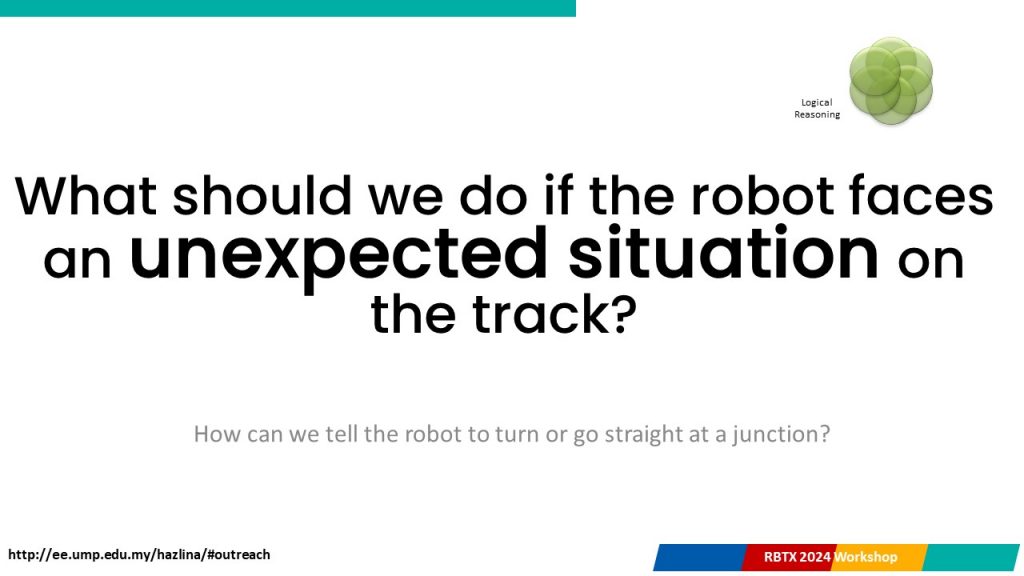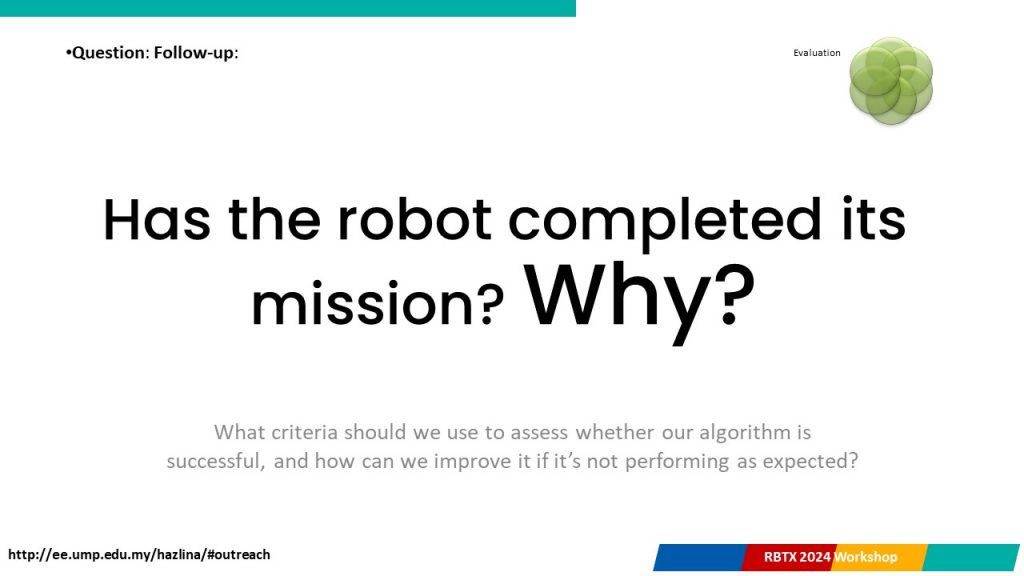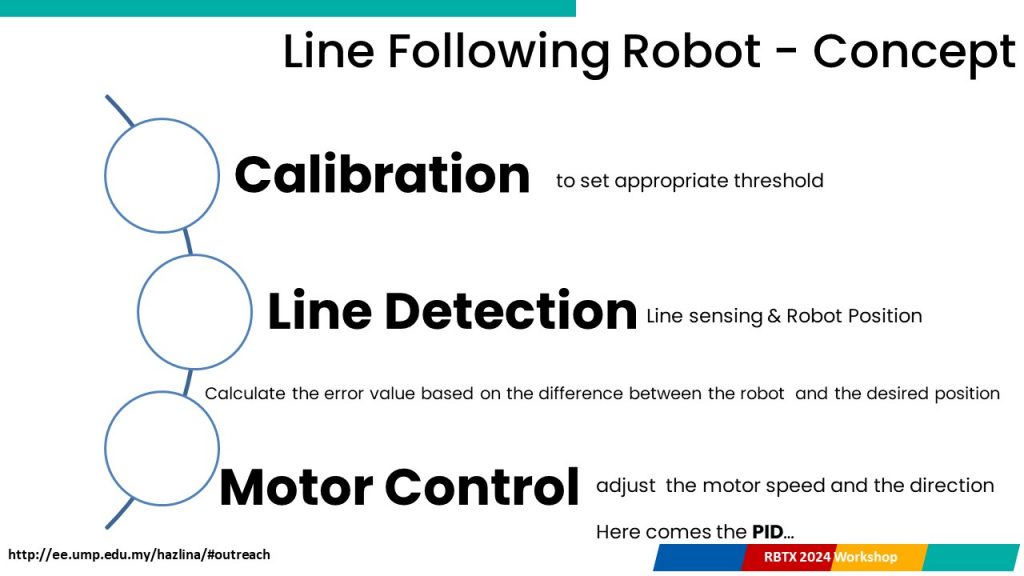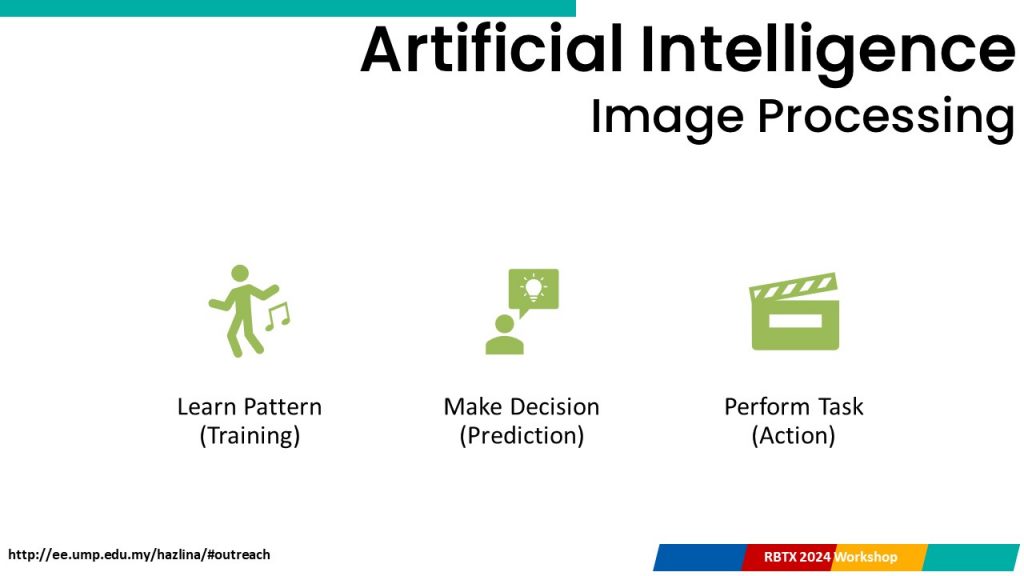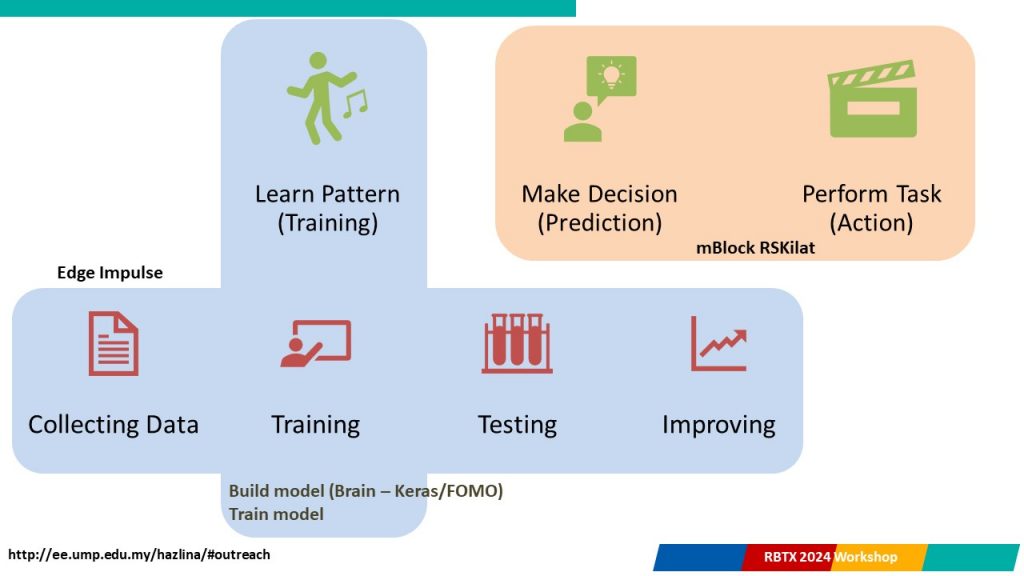UMPSA STEM Lab Robotics module now expanding to include Computational Thinking (CT) and Artificial Intelligence (AI) 🙂 . This new modules build on the foundation of the lab’s existing Arduino robotics curriculum, taking students from basic robotics to advanced AI applications.
The Arduino modules (programming & robotics) introduce participants to programming concepts and the fundamentals of robotics using Arduino, an open-source platform. Students learn about digital and analog input/output, integrating and programming sensors, and controlling actuators. They get hands-on experience with various sensors such as infrared (IR) sensors, ultrasonic sensors, and accelerometers. Additionally, they learn about Pulse Width Modulation (PWM) for motor speed control.
By the end of the module, participants build their own line-following or obstacle-avoidance robots using a two-wheel miniature robot. This hands-on project not only reinforces their learning but also sparks their interest in the endless possibilities of robotics.
Introducing Computational Thinking in Robotics
This new Computational Thinking (CT) and AI in Robotics module takes this learning a step further. Participants will now look into the strategic aspects of robotics, focusing on how to make their two-wheel miniature robot choose the best path from the start to the destination on a track. This involves:
- Decompose – Breaking down the mission into smaller tasks, such as detecting lines, making turns, and avoiding obstacles.
- Patterns – Identifying patterns in the robot’s environment and behavior to predict and plan the robot’s movements.
- Abstractions – Simplifying complex tasks by focusing on the essential details needed to solve a problem.
- Algorithms – Developing step-by-step instructions for the robot to follow, ensuring it navigates the track efficiently.
- Logical Reasoning – Using logical conditions to decide when the robot should turn, go straight, or stop.
- Evaluation – Testing and refining the robot’s performance to ensure it follows the shortest or fastest route accurately.
Through coding and hands-on experimentation, students will program their Arduino robots to follow lines (either black or white) and navigate through the track using CT principles. This practical approach helps them understand and apply CT concepts in real-world scenarios.
The activity doesn’t stop with CT. We further extend the module to include AI in robotics, focusing on image processing as a key application. Using the ESP camera onboard the robots, participants will capture and classify images. They will engage in image augmentation, generating multiple images with different sizes, tilts, and orientations to create a diverse dataset.
The training process involves teaching the AI model to recognize patterns and classify images accurately. Once the best model is generated, it is deployed onto the Arduino platform. Participants then code their robots to use this AI model, enabling them to scan images, follow lines, and perform tasks such as picking and placing items accordingly.
The modules are designed to provide students with a comprehensive understanding of both computational thinking and AI. By integrating these concepts into their robotics projects, students gain valuable skills that are highly relevant in today’s technology-driven world.
From understanding the basics of robotics to developing sophisticated AI models, participants at UMP STEM Lab are equipped with the knowledge and experience to tackle complex problems creatively and effectively. Our hands-on approach ensures that learning is both engaging and practical, preparing students for future challenges in STEM fields.
Let’s explore, learn, and innovate.





